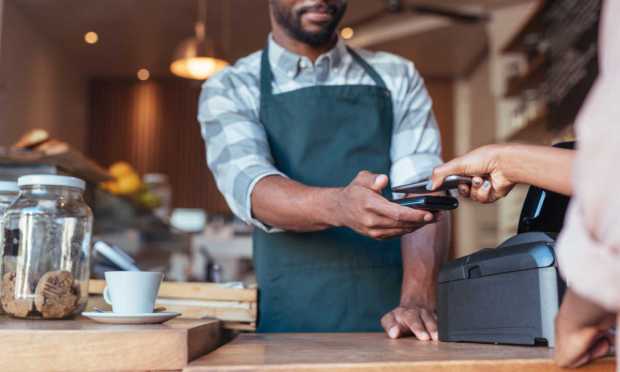
As consumers increasingly rely on digital and self-checkout in their day-to-day lives, OVG Hospitality is seeing live event attendees demand more frictionless foodservice ordering and payment technologies in venues.
In a recent interview with PYMNTS, Ken Gaber, the president of Oak View Group’s live event foodservice arm, discussed how the company’s point of sale (POS) and payment technology partnership with Oracle is helping them meet consumers’ evolving demand for familiar checkout experiences.
“I was trying to figure out what technology is adaptable to all age ranges, and what technologies are people using in their everyday life, because the average consumer goes to 1.6 events a year, on average,” Gaber said. “So, to train people in different ways [of checking out] with something that they don’t see from the street side is not going to be the easiest.”
As such, he added, implementing mobile technology for in-venue foodservice purchases now, with consumers having grown accustomed to the technology, is much easier than it would have been years ago.
Indeed, the considerable majority of consumers now engage with restaurants digitally at least some of the time, according to the PYMNTS Intelligence study “Consumer Interest in an Everyday App,” created in collaboration with PayPal, which drew on insights from a survey of more than 3,300 consumers in the United States and Australia. The results revealed that one in four U.S. restaurant customers exclusively orders food using internet-connected devices. Plus, another 36% do so both via traditional channels (in person or calling) and via internet-connected devices.
As far as the most significant changes in the industry in recent years, Gaber highlighted mobile ordering, self-checkout, and the transition to a cashless environment. These advancements have been transforming consumers’ expectations of foodservice vendors at live entertainment venues. To a lesser degree, he noted autonomous checkout growing its presence, but cautioned that this remains less common than traditional self-service technologies.
“Sometimes the new, flashiest technology isn’t the technology that the consumer wants. … A great technology that people are either scared to use, or they have to download a new app … is usually the biggest barrier to succeed,” Gaber said.
Indeed, consumers are accustomed to self-service technologies for to-go orders, and many even demand such options. PYMNTS Intelligence’s study, “The Digital Divide: Technology, the Metaverse and the Future of Dining Out,” which drew from a survey of about 2,500 U.S. consumers, revealed that 51% of grab-and-go customers said ordering through a self-service kiosk would positively impact their satisfaction.
Still, technologies are emerging that can make in-venue ordering and payment more frictionless, reducing the need for physical engagement with items such as IDs and credit cards and created a simpler overall experience.
For instance, looking ahead, Gaber expressed excitement about exploring emerging technologies such as AI-powered payments and biometric scanning for age and ID verification to provide a more seamless and secure experience for customers.
“We’re waiting to see how it goes, especially in certain states and different regulations, but I see that to be the next step,” he said.